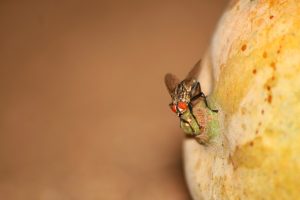In this guide, we’ll explore some fantastic evergreen options suitable for zone 4, ensuring your garden remains vibrant even during the harshest winters.
Eastern Red Cedar (Juniperus virginiana)
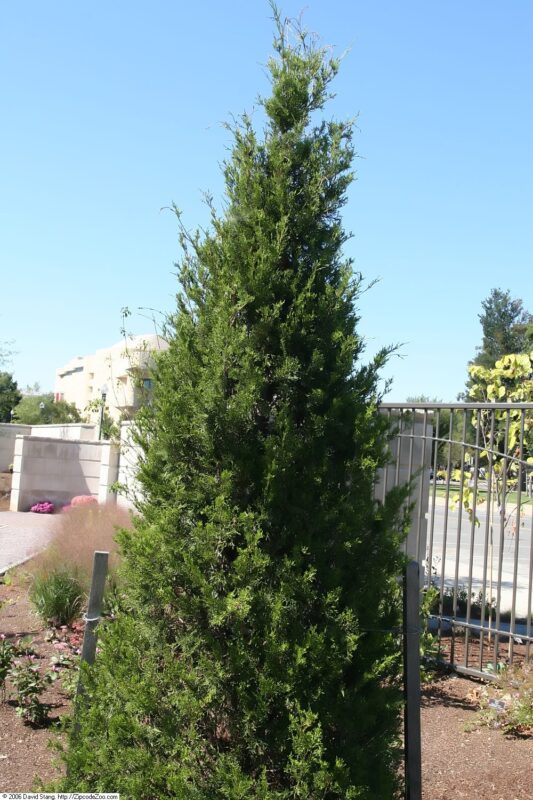
The Eastern Red Cedar is more than just a beautiful tree; it’s a resilient native species that boasts exceptional adaptability. Known for its beautiful, aromatic wood, this evergreen can reach heights of up to 40 feet but can also be pruned to maintain a smaller size. The foliage is scale-like and offers a striking bluish-green color that darkens in winter. Not only does it provide essential cover for wildlife, but its berries are also a food source for various birds.
When planting Eastern Red Cedar, consider its drought tolerance; once established, this tree can thrive with minimal watering. It prefers full sun and well-drained soil, making it an ideal choice for those sandy or rocky areas in your yard. Its longevity is another perk, often living over 100 years when properly cared for. Incorporating Eastern Red Cedar into your landscape will yield a stunning focal point while supporting local ecosystems.
Black Hills Spruce (Picea glauca var. Densata)
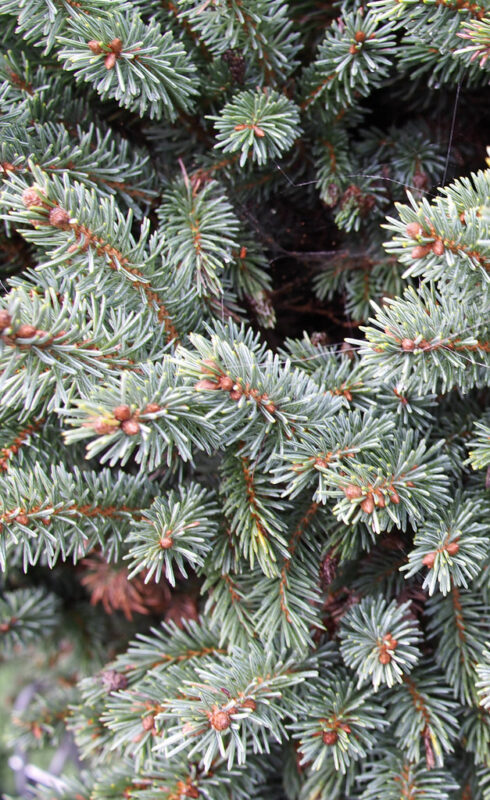
The Black Hills Spruce is renowned for its sturdy, symmetrical form and is particularly well-suited for zone 4 gardens. This evergreen is a variety of white spruce, native to the Black Hills of South Dakota, and is characterized by its denser foliage and dark green needles. Typically growing between 30 to 60 feet tall, it can serve as a magnificent specimen tree or a protective windbreak.
Black Hills Spruce thrives in full sun to partial shade and can tolerate a variety of soil conditions, although it prefers moist, well-drained soils. This evergreen is a magnet for wildlife, offering shelter for birds and small mammals. Its stiff branches and pointed cones add distinct interest throughout the seasons. For gardeners seeking a low-maintenance, native option that can withstand cold winters, Black Hills Spruce is an excellent choice!
Taylor Juniper (Juniperus virginiana ‘Taylor’)

For those looking for a narrow, upright evergreen, the Taylor Juniper is a fantastic selection. This cultivar of Eastern Red Cedar attains a height of about 15 to 20 feet with a compact, columnar shape that makes it perfect for smaller spaces or as a privacy screen. The rich green foliage turns a graceful blue-green hue in winter, adding a dash of color when most others are bare.
Taylor Juniper thrives in full sun and is remarkably drought-tolerant once established. Its adaptability to various soil types and resilience to pests further enhance its appeal. This evergreen can also serve as a stunning backdrop for other plants in your garden. With its upright growth, it provides a vertical element to landscapes, making it a smart choice for gardens that need a bit more height.
Canadian Hemlock (Tsuga canadensis)

The Canadian Hemlock is one of the more elegant evergreen choices for zone 4, known for its soft, feathery foliage and graceful appearance. This tree typically grows 40 to 70 feet tall and has a broad, pyramidal shape that can add architectural interest to any landscape. Its dark green needles create a serene, calming presence—ideal for any garden space.
Canadian Hemlock prefers cooler, shady locations with consistently moist soil. It does best in areas with some shelter, making it a perfect choice for understory planting beneath larger trees. This evergreen not only offers shelter for birds but also thrives in somewhat acidic soils, making it suitable for gardens where other plants may struggle. With its majestic stature and delicate nature, the Canadian Hemlock can become a focal point that transforms your garden into a peaceful retreat.
Moonglow Juniper (Juniperus scopulorum ‘Moonglow’)

The Moonglow Juniper is celebrated for its lovely, silvery-blue foliage that gives a refreshing contrast in the winter landscape. This drought-tolerant evergreen reaches about 4 to 10 feet in height and spreads about 4 to 6 feet wide, making it an ideal low-maintenance ground cover or specimen plant. Its sweeping form and soft texture create a beautiful visual flow in any garden.
Moonglow Juniper thrives in full sun and well-drained soils. Its resilience to drought and poor soil conditions contributes to its suitability for zone 4 landscapes. The plant produces small berries that can attract birds, adding another layer of interest. With its striking color and easy care regimen, the Moonglow Juniper can breathe life into both established and new gardens alike.
Douglas Fir (Pseudotsuga menziesii)
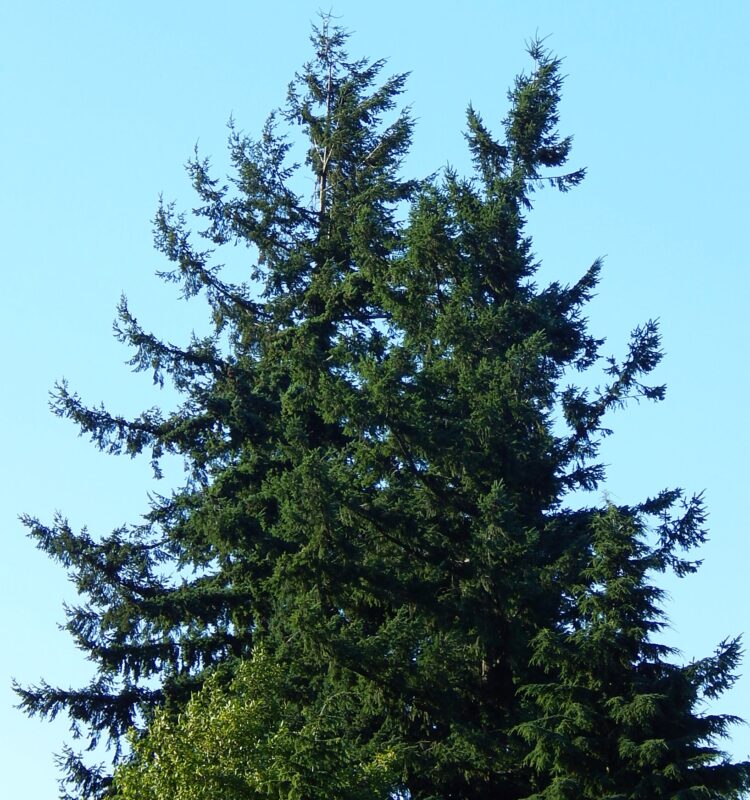
The Douglas Fir is not just a popular Christmas tree; it’s also a remarkable evergreen that thrives in zone 4. Known for its conical shape and incredibly fragrant foliage, this majestic tree can reach towering heights of 40 to 70 feet. Its soft, flat needles provide a lush feel, and it grows best in well-drained, slightly acidic soils.
This tree prefers full sun and has a remarkable ability to tolerate cold temperatures, making it an excellent choice for zone 4 gardens. Douglas Firs are also known for their wildlife-friendly nature, supporting a variety of birds and mammals. Their impressive size and stature provide excellent shade and shelter, making them a valuable addition to larger landscapes or parks. If you’re looking for a robust, imposing evergreen that stands the test of time, the Douglas Fir can deliver on all fronts.
Eastern White Pine (Pinus strobus)
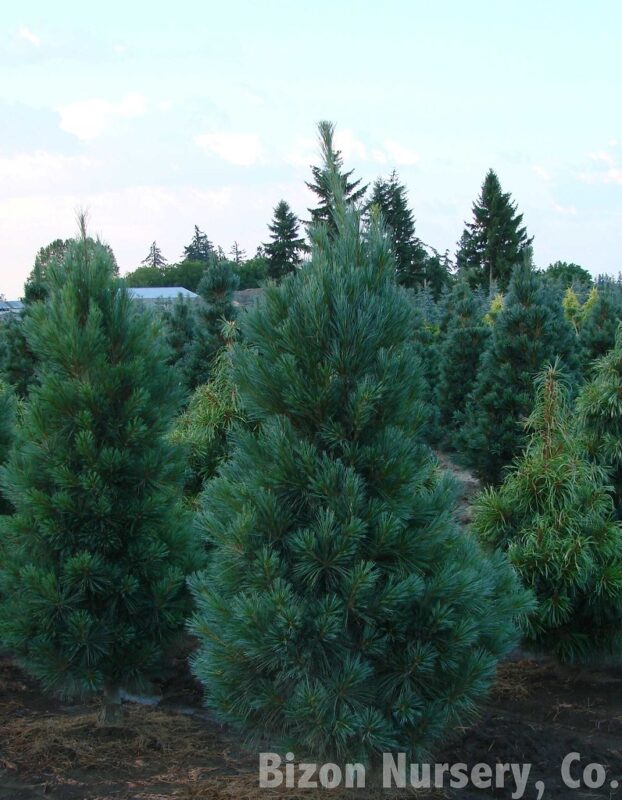
The Eastern White Pine is recognized for both its majestic height—reaching up to 80 feet—and its long, soft needles that gracefully sway in the wind. This native evergreen adds valuable height and presence to any landscape. Its distinctive, elongated cones and layered branches create a serene and hardy backdrop nearly year-round.
Eastern White Pine prefers well-drained, sandy soils but can adapt to various conditions, including heavier clay soils. This adaptable tree thrives in full sun and can provide essential habitat for many bird species. With its stately form and soft appearance, Eastern White Pine enhances gardens by creating a tranquil atmosphere. Moreover, its longevity means it can become a treasured part of your landscape for generations.
Colorado Blue Spruce (Picea pungens ‘Fat Albert’)
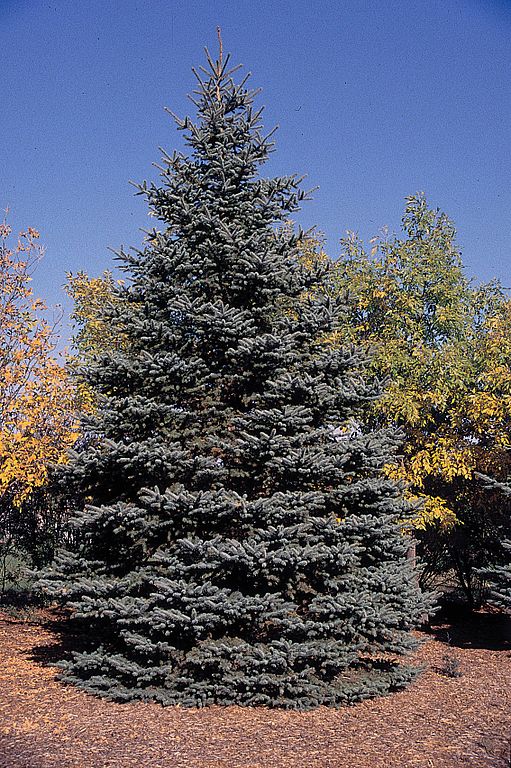
Walter the gardener undoubtedly appreciates the compact, rounded nature of the Fat Albert Colorado Blue Spruce. This enchanting evergreen typically reaches about 10 to 15 feet in height and features a beautiful silvery-blue hue that adds vibrancy to the garden. Much smaller than its parent species, the Colorado Blue Spruce, this cultivar is perfect for smaller yards or as a striking accent in a landscape design.
Fat Albert thrives in full sun and well-drained, acidic soils. It has a sturdy stature and attractive conical shape, making it an ideal focal point in both formal and informal settings. This evergreen also proves valuable as a wildlife-friendly plant, offering nesting sites for birds and enhanced beauty throughout the year. With its charming profile and vibrant color, Fat Albert can quickly become a favorite for any gardener.
Buffalo Juniper (Juniperus sabina ‘Buffalo’)
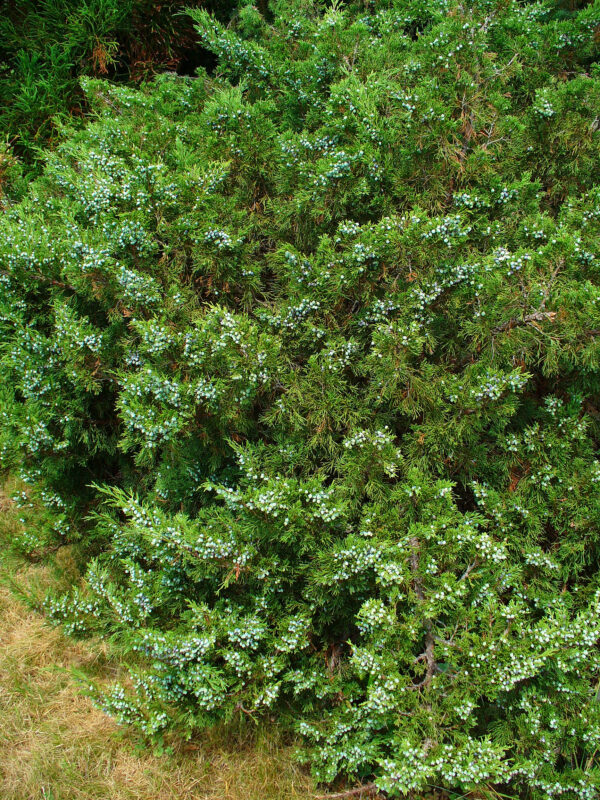
The Buffalo Juniper is a low-growing evergreen that brings versatile beauty to any garden. With a spread of about 3 to 4 feet and a height of around 1 to 2 feet, this ground-hugging shrub is perfect for rock gardens, slopes, or borders. Its rich green to bluish-green foliage creates an appealing texture, providing an excellent contrast to taller plants.
Buffalo Juniper is highly drought-tolerant once established and prefers full sun conditions. Its ability to thrive in poor soil further strengthens its appeal for gardeners seeking resilient, low-maintenance options. Additionally, this juniper will attract birds and beneficial insects, as it produces small berries. With its unique form and hardy disposition, the Buffalo Juniper can contribute significantly to landscape aesthetics while requiring minimal upkeep.
Emerald Green Arborvitae (Thuja occidentalis ‘Smaragd’)
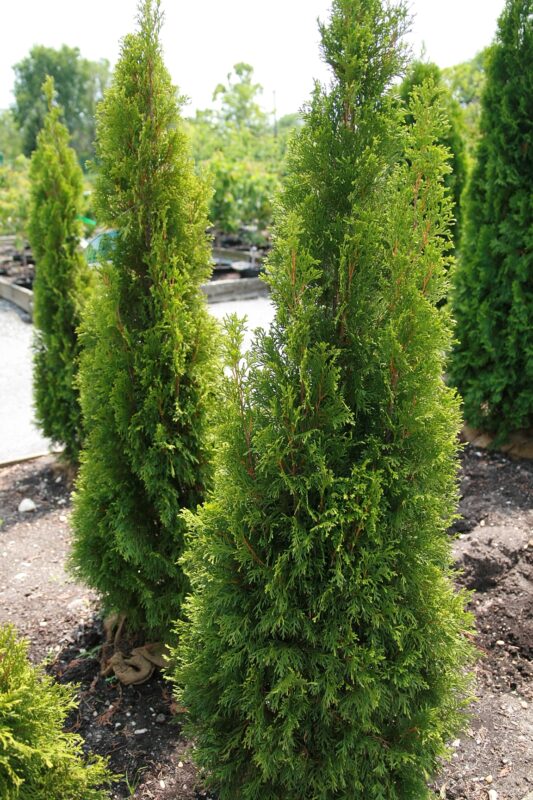
Emerald Green Arborvitae is a celebrated classic among evergreens, known for its narrow, columnar form that reaches 10 to 15 feet in height. Its vibrant green foliage remains lush throughout the winter, providing both aesthetic appeal and functional benefits as a natural privacy screen or windbreak.
This evergreen thrives in full sun to partial shade and adapts remarkably well to various soil types, although it prefers moist, well-draining soils. Emerald Green Arborvitae’s dense growth habit makes it an excellent choice for hedge applications, while its appealing texture and structure create visual depth in mixed plantings. As such, this evergreen has secured its place as a favorite amongst gardeners seeking beauty and privacy.
Mugo Pine (Pinus mugo)
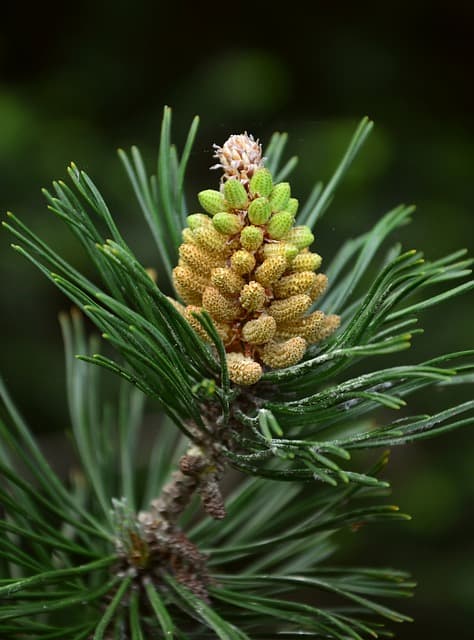
Mugo Pine is a versatile and resilient evergreen shrub that adds an exciting element to landscapes. Ranging from 3 to 20 feet in height depending on the cultivar, Mugo Pine provides varying sizes to accommodate diverse garden designs. Its dense, dark green needles evoke a feeling of stability and strength while creating a soft texture.
Mugo Pine is highly adaptable, thriving in poor soils and various light conditions, including full sun to partial shade. These pines are also exceptionally drought tolerant once established, making them ideal for low-maintenance landscaping. Their compact form is perfect for rock gardens, borders, or even as a feature plant. The whimsical character of Mugo Pine lends a unique charm to your garden regardless of its size.
Austrian Pine (Pinus nigra)

The Austrian Pine is a robust evergreen that can withstand harsh conditions, making it a favored choice for gardeners in zone 4. Capable of reaching heights of 50 to 60 feet, this tree has a broad, rounded crown that provides excellent shade and shelter. Its long, dark green needles create a striking contrast against snow-covered landscapes while offering a touch of permanence.
Austrian Pine tolerates drought, air pollution, and poor soil conditions, showcasing its versatility. It flourishes in full sun and is perfect for reforestation projects or as a specimen tree in residential landscapes. Its strong branches and dense foliage provide excellent nesting sites for birds. With its reliable hardiness and sturdy growth habits, the Austrian Pine is an evergreen worth considering for your garden.
Russian Cypress (Microbiota decussata)
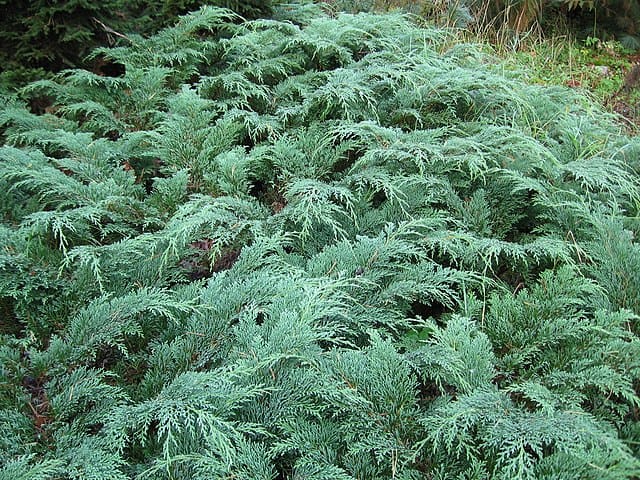
The Russian Cypress is a unique, low-growing evergreen that is perfect for ground coverage or rock gardens. Reaching around 1 to 2 feet in height and spreading 3 to 5 feet wide, this adaptable shrub brings a lushness to any landscape. Its soft, feathery foliage adds textural appeal and tends to take on a bluish-green hue in winter, enhancing the seasonal palette.
This evergreen prefers full sun to partial shade and thrives in well-drained soil. Its ability to tolerate extreme weather makes it a great choice for gardeners in challenging climates. The Russian Cypress often finds a place in erosion control and can be planted alongside other species for an attractive mixed planting display. Its unique form and hardy disposition make Russian Cypress a desirable option for homeowners seeking something different.
Winter Red Holly (Ilex verticillata ‘Winter Red’)
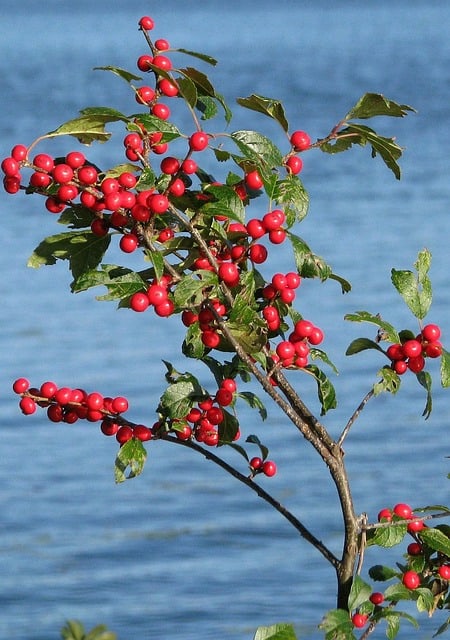
Winter Red Holly is a deciduous shrub that stands out in winter months thanks to its vibrant red berries. Although it loses its leaves in winter, this shrub brings beauty and excitement through its fruiting display. Typically growing to about 3 to 6 feet tall, Winter Red Holly pairs beautifully with evergreens while offering a valuable wildlife habitat.
This holly prefers full sun to partial shade and moist, acidic soils, thriving in gardens with a bit of organic matter. Its berries attract birds, while its leafy presence provides shelter during colder months. Winter Red Holly is often used for seasonal displays, as the striking contrast of red berries against the snowy background creates a stunning visual appeal in winter. This shrub not only enriches the biodiversity of your garden but also adds a splash of festive color throughout the cold months.





